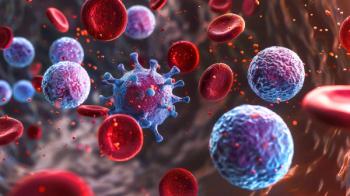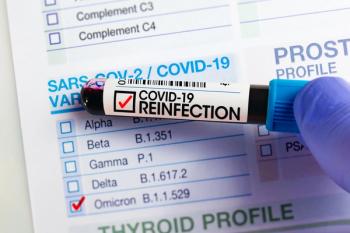
- June 2021
- Volume 89
- Issue 06
COVID-19 Vaccination Race Continues
Key Takeaways
- Operation Warp Speed accelerated vaccine development by running clinical trials and manufacturing concurrently, a method not feasible for regular use due to resource demands and risks.
- Pharmacists have been pivotal in vaccination efforts, but communication gaps with physicians and procedural inconsistencies need addressing for improved collaboration.
Here are 3 questions regarding pharmacists' role in a massive health care undertaking.
It has been about a year since the federal government initiated Operation Warp Speed, a program to develop, manufacture, and distribute COVID-19 vaccines with the lofty goal of producing and distributing 300 million doses by January 2021.1
This gigantic program—its funding included $10 billion from the CARES Act and access to $95.5 billion in as-needed funding from the Biomedical Advanced Research and Development Authority for countermeasure development and the National Institutes of Health for research—is the largest of its kind in history. The SARS-CoV-2 pandemic necessitated 3 actions1:
- Running clinical trials simultaneously, rather than sequentially
- Manufacturing the vaccines concurrently with trials, so they would be ready if effective
- Authorizing vaccines under “emergency use”
The results have been astonishing to people familiar with the slower, more measured pace of traditional drug research and development. The normal vaccine approval process, described in the figure,2 involves 7 sequential steps that can take years.2 Prior to the FDA’s Emergency Use Authorization (EUA) that allowed the use of the Pfizer-BioNTech COVID-19 vaccine, the fastest vaccine developed was that for mumps. Maurice R. Hilleman of Merck created that vaccine in 1967 after a decades-long search for a mumps cure became a priority during World War II. During World War I, mumps was the leading cause of missed days among US army active duty personnel in France. During the 1940s and 1950s, investigators made constant small breakthroughs in lab techniques. It took Hilleman 4 years to attenuate the Jeryl Lynn strain of mumps that he had cultured from his daughter until it was an effective and safe vaccine. That vaccine remains an MMR vaccine component.3
Now, with EUA awarded to 3 vaccines, pharmacists are at the forefront of the race to vaccinate as many Americans as possible. Let’s look at 3 questions concerning the COVID-19 vaccines and pharmacist efforts:
1. Why don’t we use this approval process all the time?
Many people, pharmacy staff members included, wonder why all vaccine development is not this fast.3 The answer is that the pandemic galvanized the development and review process for these particular vaccines. But this approach consumes resources, and in many companies, federal agencies, and state governments it redirects efforts away from existing projects into 1 project. The approach also has a high level of risk: Manufacturing vaccines while running trials with no guarantee of FDA approval could result in large inventories that cannot be used. Additionally, such an approach requires fast clinical trial enrollment, which is a challenge unless a sense of urgency is present.1,3
2. Is everyone happy with the pharmacist as vaccinator?
Many have lauded pharmacies and pharmacists for their efforts to increase vaccination rates. Certainly, many Listservs and social media outlets have provided a platform for complaining about lack of appointment availability and that some neighborhood pharmacies seem to be more likely to have vaccines available while others lag behind. But overall, people have been grateful and receptive. Pharmacists should note that, as always, there is room for improvement. The results of a recent study (N = 642) show that most physicians perceive pharmacist vaccinators as helpful and convenient for patients but also worry about pharmacists’ lack of access to sufficient patient information or vaccination history.4 Physicians also indicated that pharmacists do not tell them when they administer vaccinations (69%) and that they do not enter vaccinations into an immunization information system (57%). These findings suggest that collaboration between pharmacists and primary-care physicians needs improvement.4
3. What have pharmacists found noteworthy?
Many pharmacists report that, as expected, processes behind the scenes have sometimes been confusing but have improved and streamlined rapidly. They also report that procedures were different even between sites in the same organizations. And although pharmacists are accustomed to patients having anxiety or crying before vaccinations, they have been surprised to see many being moved to tears after receiving a vaccine. Such is the joy and relief of receiving a shot of hope.5
Interdisciplinary work always exposes the differences between professions, and in vaccination clinics many pharmacists have been surprised by other peoples’ injection technique. The New York Times published a widely read piece about people receiving the vaccine that prompted a nurse to comment about the great variation in injection techniques. She cited “... slow, tentative needle insertions, not stabilizing the site, too high up in the shoulder... ” among the problems she had observed.6 The table7-10 lists some points to remember about vaccination technique.
Conclusion
Expect changes related to the vaccines as new ones are approved, existing vaccine vial sizes change and storage conditions improve, and data sets accumulate. The best approach to stay current is to read the FDA-approved product labeling.
Jeannette Y. Wick, RPh, MBA, FASC, is the assistant director of the Office of Pharmacy Professional Development at the University of Connecticut School of Pharmacy in Storrs.
REFERENCES
- COVID-19 vaccines. Department of Health & Human Services. Updated May 13, 2021. Accessed April 23, 2021.
www.hhs.gov/sites/default/files/fact-sheet-operation-warp-speed.pdf - The history of vaccines. Vaccine development, testing, and regulation. College of Physicians of Philadelphia. Updated January 17, 2018. Accessed April 23, 2021.
www.historyofvaccines.org/content/articles/vaccine-development-testing-and-regulation - Roos D. How a new vaccine was developed in record time in the 1960s. History Channel. June 22, 2020. Accessed April 23, 2021.
www.history.com/news/mumps-vaccine-world-war-ii - MacBrayne CE, Hurley LP, O'Leary ST, et al. Primary care physicians’ perspective on pharmacists delivering vaccines to adults. J Am Board Fam Med. 2021;34(2):392-397. doi:10.3122/jabfm.2021.02.200486
- McClurg L. COVID-19 vaccination has been conjuring up emotions and memories. NPR. March 21, 2021. Accessed April 23, 2021. https://www.npr.org/2021/03/21/978727427/covid-19-vaccination-has-been-conjuring-up-emotions-and-memories#:~:text=COVID%2D19%20Vaccination%20Has%20Been%20Conjuring%20Up%20Emotions%20And%20Memories%20%3A%20NPR&text=Ethics-,COVID%2D19%20Vaccination%20Has%20Been%20Conjuring%20Up%20Emotions%20And%20Memories,epidemics%20ended%20by%20medical%20advancement
- Harmon A. What the vaccine side effects feel like, according to those who’ve gotten it. New York Times. December 28, 2020. Access April 23, 2021.
https://www.nytimes.com/2020/12/28/us/vaccine-first-patients-covid.html - National Center for Immunization and Respiratory Diseases. General recommendations on immunization––recommendations of the Advisory Committee on Immunization Practices (ACIP). MMWR Morb Mortal Wkly Rep. 2011;60(2):1-64.
- Atanasoff S, Ryan T. Lightfoot R, Johann-Liang R. Shoulder injury related to vaccine administration (SIRVA). Vaccine. 2010;28(51):8049-8052. doi:10.1016/j.vaccine.2010.10.005
- Vaccine administration. CDC. Updated May 16, 2018. Accessed April 23, 2021. https://www.cdc.gov/vaccines/hcp/admin/admin-protocols.html
- Ipp M, Taddio A, Sam J, Gladbach M, Parkin PC. Vaccine-related pain: randomised controlled trial of two injection techniques. Arch Dis Child. 2007;92(12):1105-1108. doi:10.1136/adc.2007.118695
Articles in this issue
over 4 years ago
OTC Product News: June 2021over 4 years ago
Does Vitamin D Offer Protection Against COVID-19?over 4 years ago
Use Caution When Handling Controlled Substance Prescriptionsover 4 years ago
Generic Product News: June 2021over 4 years ago
Pharmacists Are Needed to Provide Birth Controlover 4 years ago
Clearwater Pharmacy's Therapy Bunny Steals Heartsover 4 years ago
OTC Cases: Ear Infectionsover 4 years ago
June 2021 Rx Product Newsover 4 years ago
Women May Experience Heart Disease Differently Than Menover 4 years ago
Social Determinants and Vulnerability Affect Health OutcomesNewsletter
Stay informed on drug updates, treatment guidelines, and pharmacy practice trends—subscribe to Pharmacy Times for weekly clinical insights.


















































































































































































































